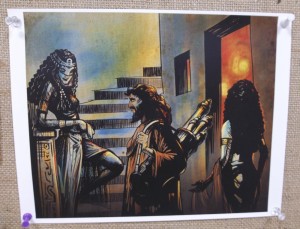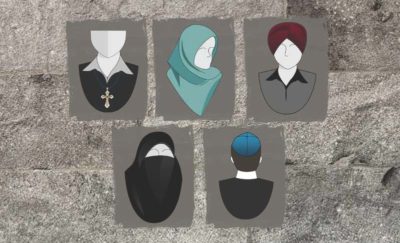Ark Encounter will be a $150 million biblical theme park, scheduled to open in summer 2016. Set on 800 acres…
Religions and their publics

Guest edited by James Bielo and Eric Hoenes, the essays in this series explore the regimes of representation and social engagement through which various Jewish, Christian, and Muslim communities create, maintain, contest, and materialize their visions of the public sphere. Engaging questions of public religion from the vantage point of anthropology of religion, the series takes up themes of state secularisms, theological-political subjectivity, sensorial practice, law, gender, mass media, and religious publicity, and examines how local communities make use of material, semiotic, and moral resources (including resources shared as citizens of a secular polity) to delineate the nature of their role in and in relation to public life.
Given that modern secular societies legitimize some version of religious pluralism, the collection gives critical attention to cases in which multiple institutions or regimes make competing claims upon the same publics. By examining intra- and inter-religious sites of contestation, the essays highlights the boundaries, interstitial spaces, strategies, and resources through which the categories of “religious” and “secular” are constructed and harnessed to impact public life.
The discussion is well-suited for use in courses dealing with issues of religion, secularism, and/or the public sphere and our guest editors suggest this teaching guide as an aid for course use.
What kind of territory? On public religion and space in Ethiopia
Ethiopian Prime Minister Meles Zenawi died shortly before the 2012 Meskel festival, the Finding of the True Cross—one of the…
Faith in the nation: Nigerian publics and their religions
The cityscape of Abuja, the capital of Nigeria, is dominated by two houses of worship known as the National Mosque…
Short skirts and niqab bans: On sexuality and the secular body
Introduced in Québec in March 2010, Bill 94 proposed requiring women to unveil their faces if they wanted to work…
Constructing the Jewish public space: Community, identity, and collaboration
The construction of space constitutes one of the primary ways through which religions create templates for behavior. As they construct…
Overlapping senses of salvation
With a Guatemala’s history of social and political instability, the place of religion in public life is often fraught with…
The multilingual Jewish blogosphere
When new media are introduced into religious communities, they often become sites for struggles over the very nature of mediation.…
Stuck in the middle with you
Surely this was not how most of its philosophers wanted liberalism or pluralism to turn out: a world in which…
















